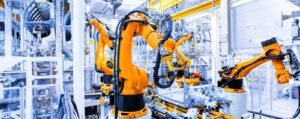Table of Contents
Introduction
When developing a new product, it’s essential to understand the various stages of its journey from a napkin idea to a market-ready offering. Three crucial stages in the product development process are the Proof of Concept (POC), prototype, and finished product.
Each stage serves a distinct purpose, and understanding their differences is vital for successful product development. This blog post will explore the differences between the POC, prototype, and finished product stages. Ultimately, you should come away with some foundational knowledge of each stage to help guide you in developing your next product.
Proof of Concept (POC)
A POC aims to determine whether a particular technology, approach, or solution can solve a specific problem. It is not mandatory and can be skipped if your engineering team is confident enough to move onto the prototyping stage.

Design
POCs are generally developed with minimal effort, time, and resources. They are often quick and rough implementations of one or two features, aiming to test the viability of an idea as efficiently as possible. A POC often uses off-the-shelf components like Arduino, Raspberry PI, and plastic enclosures.
Quality
Quality is not a significant consideration for a POC since its lifespan typically spans a few weeks or even just a few days. Once professional product development commences, a POC is typically discarded unless there is a desire to keep it as a souvenir.
Manufacturing Process
Developing a POC is often handled by a single individual, the lead engineer. A single POC is often adequate for validating product concepts, utilising readily available components connected by jumper wires. If you intend to showcase the POC to external parties, such as investors, incorporating 3D printing to create a low-fidelity product enclosure can be beneficial.
Cost
The cost of producing a POC is higher than that of a prototype and a finished product. This is mainly due to the inclusion of off-the-shelf development boards and hardware components in a POC, which may not be necessary for the final product. However, the cost of a POC development is generally not a significant concern since only one POC prototype is typically built.
Usage
A POC focuses on exploring the potential of an idea and evaluating its viability before committing resources to further development. It is often discarded once the product concept is proven. Sometimes, a POC may serve purposes like fundraising or obtaining internal project approval. Attempting to turn a POC into a fully functional product is a common mistake many amateurs make.
Prototype
Prototypes are tangible representations of the final product to showcase its functionalities, features, and overall design. They serve as working models to gather feedback, test performance, and refine the concept before proceeding to mass production.

Design
A prototype is often designed by a multi-disciplinary team of engineers, such as an industrial designer, mechanical engineer, hardware engineer and firmware engineer. Depending on the complexity of the product, it can take a few months to a few years to design the prototype.
Quality
Prototypes may have lower quality standards because it’s primarily used for testing and iteration. They may be more prone to defects, performance, and reliability concerns.
Manufacturing Process
Prototypes are usually produced in small quantities, often by hand or using rapid prototyping techniques like 3D printing. The emphasis is on flexibility and speed rather than scalability.
Cost
Prototypes can be relatively expensive to produce due to the small-scale and iterative nature of the process. They may require manual assembly or custom components, which can drive up costs.
Usage
The primary purpose of a prototype is to assess user experience, identify flaws or areas of improvement, and iterate on the design. It allows developers to make necessary adjustments and enhancements based on user feedback, technical considerations, and market requirements.
Final Product
A finished product represents the culmination of the product development process. It is the final version of the product, ready for commercial distribution and use by customers. Finished products encompass all the essential features, functionalities, and aesthetics defined during the design and development phases.
Before this stage, rigorous testing, refinement, and quality assurance processes are carried out to ensure the product meets the required performance, reliability, and safety standards.
Finished products are manufactured at scale and available for sale to the target market.

Design
A finished product has a refined design optimised for efficient manufacturing, aesthetics, user experience, and meeting market demands.
Quality
A finished product undergoes rigorous quality control measures to ensure consistent quality, reliability, and compliance with industry standards.
Manufacturing Process
The finished products are usually made in factories. The manufacturing process for a finished product involves larger-scale production using specialised tools, moulds, assembly lines, and automation techniques.
Cost
Finished products benefit from economies of scale in manufacturing, leading to lower per-unit costs.
Usage
Once finished products reach the market, they are widely available for purchase by customers.
Conclusion
Understanding the differences between the Proof of Concept (POC), prototype, and finished product stages is crucial in the journey from ideation to market launch.
A POC helps validate the feasibility and potential of a concept, while prototypes allow for refinement and iteration before reaching the final version. The finished product represents the culmination of development efforts and is ready for mass production and commercialisation.
By recognising the unique purposes of each stage, product developers can navigate the development process more effectively, ensuring the creation of successful and market-ready offerings.
If you’re interested in learning how we’ve turned more than 100 products from an idea into finished products, check out our ebook, “How We’ve Developed 100+ Hardware Products”, where our process to develop, industrialise, and manufacture a product is revealed.






